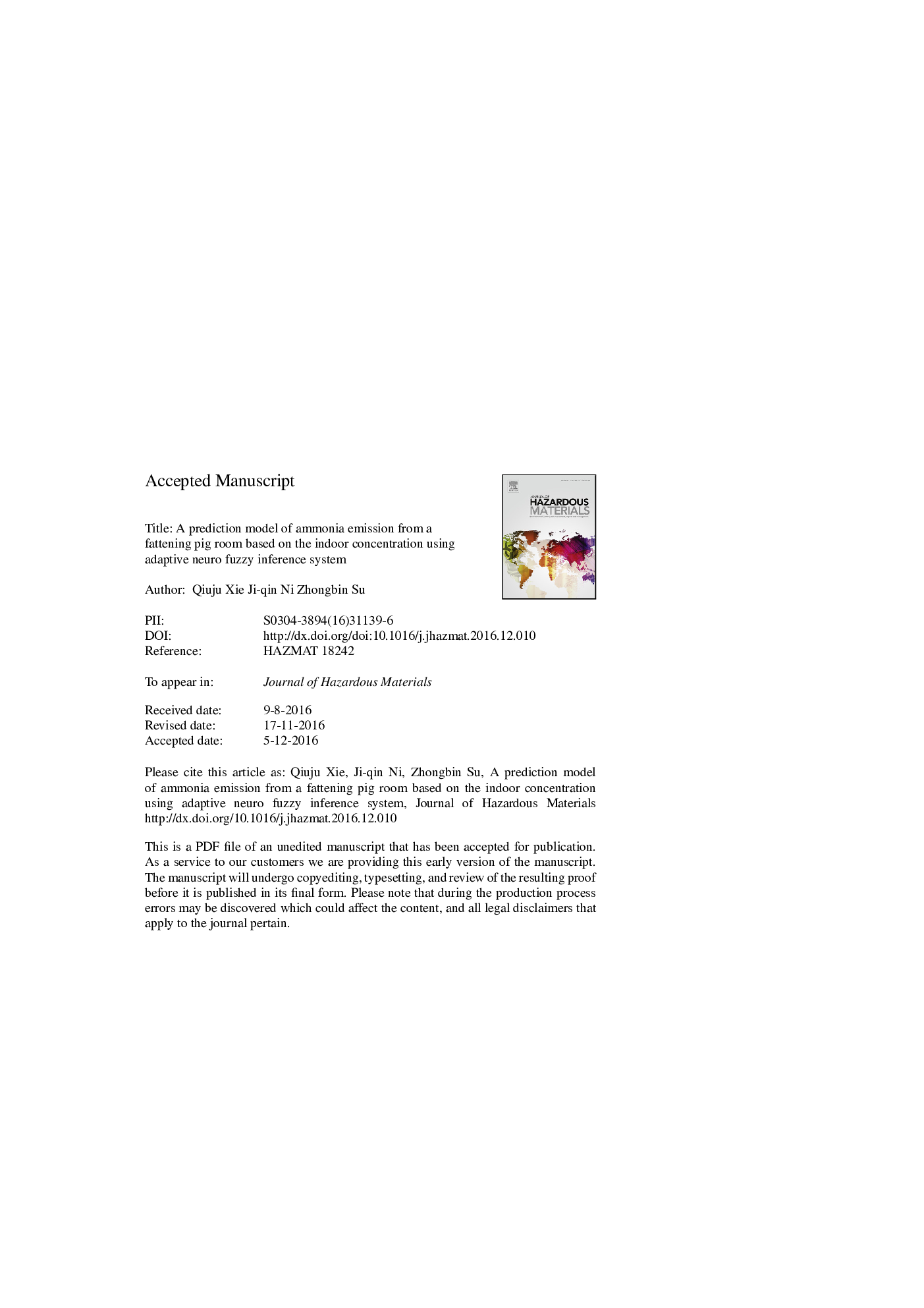| Article ID | Journal | Published Year | Pages | File Type |
|---|---|---|---|---|
| 4979743 | Journal of Hazardous Materials | 2017 | 30 Pages |
Abstract
Ammonia (NH3) is considered one of the significant pollutions contributor to indoor air quality and odor gas emission from swine house because of the negative impact on the health of pigs, the workers and local environment. Prediction models could provide a reasonable way for pig industries and environment regulatory to determine environment control strategies and give an effective method to evaluate the air quality. The adaptive neuro fuzzy inference system (ANFIS) simulates human's vague thinking manner to solve the ambiguity and nonlinear problems which are difficult to be processed by conventional mathematics. Five kinds of membership functions were used to build a well fitted ANFIS prediction model. It was shown that the prediction model with “Gbell” membership function had the best capabilities among those five kinds of membership functions, and it had the best performances compared with backpropagation (BP) neuro network model and multiple linear regression model (MLRM) both in wintertime and summertime, the smallest value of mean square error (MSE), mean absolute percentage error (MAPE) and standard deviation (SD) are 0.002 and 0.0047, 31.1599 and 23.6816, 0.0564 and 0.0802, respectively, and the largest coefficients of determination (R2) are 0.6351 and 0.6483, repectively. The ANFIS prediction model could be served as a beneficial strategy for the environment control system that has input parameters with highly fluctuating, complexity, and non-linear relationship.
Related Topics
Physical Sciences and Engineering
Chemical Engineering
Chemical Health and Safety
Authors
Qiuju Xie, Ji-qin Ni, Zhongbin Su,
